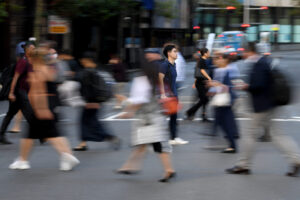Victorians emerging from lockdowns now confront Australia’s harsh COVID-era work reality marked by more insecure jobs, mass unemployment, and long-term work at the kitchen table.
In this commentary, which originally appeared in The Age, Centre for Future Work Senior Economist Alison Pennington discusses what the pandemic reveals about Australia’s high levels of insecure work, new work-from-home risks, and how rebuilding more secure labour markets will be critical to creating more good jobs in our post-COVID recovery.
Between the Lines Newsletter
The biggest stories and the best analysis from the team at the Australia Institute, delivered to your inbox every fortnight.
You might also like
Analysis: Will 2025 be a good or bad year for women workers in Australia?
In 2024 we saw some welcome developments for working women, led by government reforms. Benefits from these changes will continue in 2025. However, this year, technological, social and political changes may challenge working women’s economic security and threaten progress towards gender equality at work Here’s our list of five areas we think will impact on
Go Home On Time Day 2025. As full timers disconnect, part timers are doing more unpaid overtime
New research by the Centre for Future Work at The Australia Institute has revealed a disturbing new twist when it comes to unpaid overtime in Australia.
A Women’s Agenda for COVID-Era Reconstruction
Women have been uniquely and disproportionately impacted by the COVID-19 pandemic and resulting recession: losing more jobs and hours, shouldering a higher unpaid caring work burden, and undertaking essential and frontlines jobs. Without targeted action to rebuild women’s jobs and ease caring demands, decades of collective advances toward decent paid work could be eroded.

